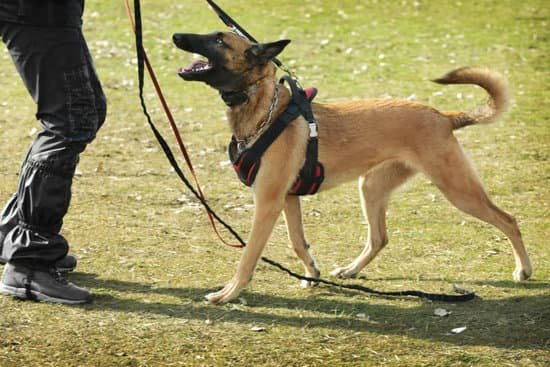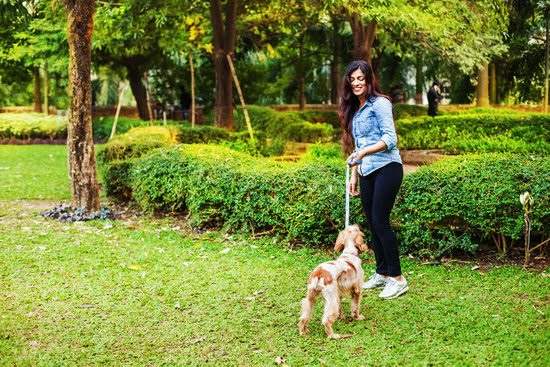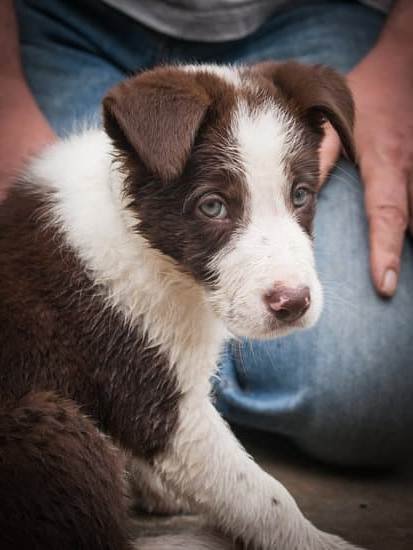Training a small dog to use puppy pads is a crucial step in successful potty training. Puppy pads provide a convenient indoor option for your furry friend, especially when outdoor access is limited. In this article, we will discuss the importance of using puppy pads for small dogs and provide valuable tips on how to effectively train your pet to utilize them.
Small dogs have unique needs and behaviors that require specialized training methods. Understanding your pet’s specific requirements is essential in establishing an effective potty training routine. By recognizing these factors, you can tailor your approach to suit your small dog’s preferences and ultimately achieve success in using puppy pads.
Choosing the right puppy pad for your small dog is key to ensuring comfort and convenience during the training process. Factors such as size, absorbency, and scent can impact your pet’s willingness to use the pad. By selecting the most suitable option for your furry friend, you can create a positive experience that encourages consistent usage of the pad.
Understanding Your Small Dog’s Needs and Behavior
Small Dog Breeds and Their Potty Training Needs
Small dog breeds, such as Chihuahuas, Dachshunds, and Yorkshire Terriers, have unique potty training needs compared to larger breeds. Due to their size, small dogs may have smaller bladders and may need more frequent bathroom breaks. Understanding the specific needs of your small dog breed is essential in successfully training them to use puppy pads.
Body Language Cues: Signs Your Small Dog Needs to Go
One key aspect of potty training a small dog is recognizing their body language cues when they need to go. Common signs that your small dog needs to use the bathroom include sniffing around, circling in one spot, or suddenly becoming restless. By paying attention to these cues, you can proactively guide your small dog towards the puppy pad.
Consistency Is Key in Small Dog Training
Consistency plays a significant role in successfully training small dogs to use puppy pads. Establishing a routine for potty breaks and consistently directing your small dog towards the designated area will help reinforce positive habits. Additionally, providing praise and rewards when your small dog uses the puppy pad will further encourage good behavior. Remember that patience and persistence are crucial when it comes to training small dogs on how to use puppy pads effectively.
Choosing the Right Puppy Pad for Your Small Dog
Puppy pads are a convenient tool for pet owners who are training their small dogs to use a designated potty area indoors. However, choosing the right puppy pad is crucial in ensuring successful training. There are various options available on the market, so it’s important to consider your small dog’s needs and preferences when selecting the best puppy pad for them.
To effectively train your small dog to use puppy pads, consider the following factors when choosing the right pad:
- Size: Make sure the puppy pad is suitable for your small dog’s size and breed. A pad that is too small may not provide enough space for them to comfortably do their business.
- Absorbency: Look for puppy pads with high absorbency levels to prevent leaks and messes on your floors. This is especially important for small dogs with frequent potty breaks.
- Leak-proof backing: Ensure that the puppy pad has a leak-proof backing to protect your floors from accidents. This feature is essential in containing any liquid waste and preventing it from seeping through.
- Scented or unscented: Some puppy pads come with a scent attractant to encourage dogs to use them. Consider whether your small dog responds better to scented or unscented pads when making your selection.
By carefully considering these factors and selecting the most appropriate puppy pad for your small dog, you can set them up for successful potty training indoors. Remember that every dog is unique, so observing your pet’s behavior and preferences will help determine which type of puppy pad works best for them in conjunction with positive reinforcement techniques.
Introducing the Puppy Pad to Your Small Dog
When it comes to training a small dog to use puppy pads, the key is to make the introduction as smooth and positive as possible. Start by placing the puppy pad in a designated area of your home where your small dog spends most of their time. This could be near their bed, food bowl, or even in a quiet corner where they feel comfortable.
To familiarize your small dog with the puppy pad, encourage them to explore it on their own. You can place treats on the pad or use a favorite toy to entice them to approach and sniff it. Positive reinforcement plays a crucial role during this stage – praise and reward your small dog whenever they show interest in or interact with the puppy pad.
It’s important to be patient during this process, as every small dog will react differently to the introduction of a new training tool. If your small dog seems hesitant or unsure about using the puppy pad at first, avoid scolding or punishing them. Instead, continue to offer encouragement and rewards for any positive behavior they exhibit around the pad. Remember, consistency and positive reinforcement are key when teaching your small dog how to use puppy pads effectively.
Establishing a Routine for Using Puppy Pads
When it comes to training a small dog to use puppy pads, consistency is key. Establishing a routine can help your furry friend understand when and where they are supposed to go potty. Here are some tips on how to create a successful routine for using puppy pads:
1. Set a schedule: Small dogs have small bladders, so it’s important to take them to the puppy pad regularly throughout the day. A good rule of thumb is to bring your dog to the pad first thing in the morning, after meals, before bedtime, and any time you see signs that they may need to go.
2. Use cues: Dogs respond well to cues and routines. Try using a specific word or phrase every time you bring your small dog to the puppy pad. This will help them associate the cue with going potty in the right place.
3. Reward good behavior: Positive reinforcement is vital in training small dogs to use puppy pads successfully. Whenever your dog uses the pad correctly, be sure to praise them and offer a treat as a reward. This will strengthen their understanding of what is expected of them.
Remember that accidents may happen during the training process, but staying patient and consistent with your routine will help your small dog learn quickly and effectively how to use puppy pads for their potty needs.
By following these simple steps consistently, you will be well on your way to successfully training your small dog to use puppy pads in no time.
Positive Reinforcement Techniques for Successful Training
Using Treats and Praise
One effective way to train a small dog to use puppy pads is through positive reinforcement. When your small dog successfully uses the puppy pad, immediately reward them with treats and praise. This will help them associate using the pad with a positive experience. Make sure to use high-value treats that your dog loves to increase motivation. Consistency is key in reinforcing this behavior, so be sure to reward your dog every time they use the puppy pad correctly.
Clicker Training
Another positive reinforcement technique that can be effective in training a small dog to use puppy pads is clicker training. Clicker training involves using a clicker device to signal desired behavior followed by a treat.
To start, click the device when your dog eliminates on the puppy pad and then give them a treat immediately after. This will help create a strong association between using the pad and receiving a reward, making it more likely for your small dog to repeat the behavior in the future.
Consistency and Patience
Consistency and patience are crucial when using positive reinforcement techniques to train a small dog to use puppy pads. It’s important to set up a consistent routine for your small dog by taking them to the puppy pad at regular intervals, especially after eating, drinking, or waking up from naps.
If accidents happen, remain patient and avoid scolding your dog as this can create fear and hinder their progress. By consistently reinforcing good behavior with rewards and maintaining patience throughout the training process, you can effectively teach your small dog how to use puppy pads.
Dealing With Accidents and Setbacks
One effective way to handle accidents is to clean up the mess promptly and thoroughly, using an enzymatic cleaner specifically designed for pet stains. This will help eliminate any lingering odors that may attract your small dog back to the same spot. Accidents should be treated as a learning opportunity for both you and your furry companion. Take note of when and where accidents happen most frequently so you can adjust your training approach accordingly.
Consistency is key when training a small dog to use puppy pads, but it’s also important to be flexible and adapt your methods as needed. If you notice that your small dog consistently has accidents in a specific area of your home, consider relocating the puppy pad to that spot.
Additionally, if you find that your small dog is having trouble using the designated puppy pad area, try using a different type or brand of pad to see if that improves their success rate. Remember that each small dog is unique, so finding what works best for yours may require some trial and error.
| Training Tip | Description |
|---|---|
| Clean Up Accidents Promptly | Use an enzymatic cleaner to eliminate odors and prevent repeat accidents. |
| Stay Positive | Avoid scolding or punishing your small dog after accidents; focus on positive reinforcement instead. |
| Adjust Your Approach | Be willing to change tactics if necessary based on where and when accidents occur. |
Gradually Transitioning Your Small Dog to Outdoor Potty Training
Transitioning a small dog from using puppy pads indoors to outdoor potty training can seem like a daunting task, but with patience and consistency, it is entirely achievable. This step is essential for helping your small dog understand the difference between indoor and outdoor bathroom habits. The key is to slowly ease them into the new routine while continuing to provide positive reinforcement.
To begin the transition process, start by gradually moving the puppy pad closer to the door that leads outside. This will help your small dog associate going potty with being closer to the outside environment. Once they are consistently using the pad near the door, start taking them outside more frequently, especially after meals or naps. Use verbal cues such as “go potty” to help them understand what is expected of them.
It’s important to remember that accidents may happen during this transition period, so be patient and avoid punishing your small dog for mistakes. Instead, continue to provide positive reinforcement when they do eliminate in the desired outdoor spot.
Over time, as your small dog becomes more accustomed to going potty outside, you can gradually decrease their access to indoor puppy pads until they are fully transitioned to outdoor potty training. Remember that every small dog is different, so it may take some time and adjustments before they consistently go outside.
Tips for Consistent Success
Training a small dog to use puppy pads can be a challenging but rewarding process. By understanding your small dog’s needs and behavior, choosing the right type of puppy pad, and using positive reinforcement techniques, you can successfully train your furry friend to use puppy pads.
Consistency is key when it comes to training your small dog to use puppy pads. Establishing a routine for using the pads and providing plenty of praise and treats when your dog successfully goes potty on the pad will help reinforce this behavior. It’s important to remain patient and persistent throughout the training process, as accidents and setbacks are bound to happen.
If you do encounter accidents or setbacks during the training process, don’t get discouraged. It’s important to remain calm and continue with your training efforts. By gradually transitioning your small dog to outdoor potty training once they have successfully mastered using puppy pads indoors, you can further solidify their potty-training skills. Remember that each dog is different, so it may take time to find what works best for your furry companion.
In conclusion, with patience, consistency, and positive reinforcement techniques, you can successfully train a small dog to use puppy pads. By following the tips outlined in this article and remaining dedicated to the training process, you can help ensure that your small dog develops good potty habits that will last a lifetime.
Frequently Asked Questions
How Do I Get My Dog to Use Puppy Pads?
Encouraging your dog to use puppy pads involves consistency and positive reinforcement. Start by placing the pad in a designated area and guiding your dog to it regularly. Praise them when they use it correctly and clean up accidents promptly to maintain hygiene.
How Do I Attract My Dog to Pee Pad?
To attract your dog to pee pads, you can try using a specific scent spray that is appealing to dogs. Additionally, placing a used pad on top of a fresh one can help your dog associate the smell with the desired behavior. Consistency is key in reinforcing this habit.
How Long Does It Take for a Puppy to Learn to Use a Puppy Pad?
The time it takes for a puppy to learn to use a puppy pad varies depending on factors such as age, breed, and individual temperament. It typically ranges from a few weeks to a couple of months. Consistent training and positive reinforcement are essential for helping puppies learn this behavior successfully.

Welcome to the blog! I am a professional dog trainer and have been working with dogs for many years. In this blog, I will be discussing various topics related to dog training, including tips, tricks, and advice. I hope you find this information helpful and informative. Thanks for reading!





